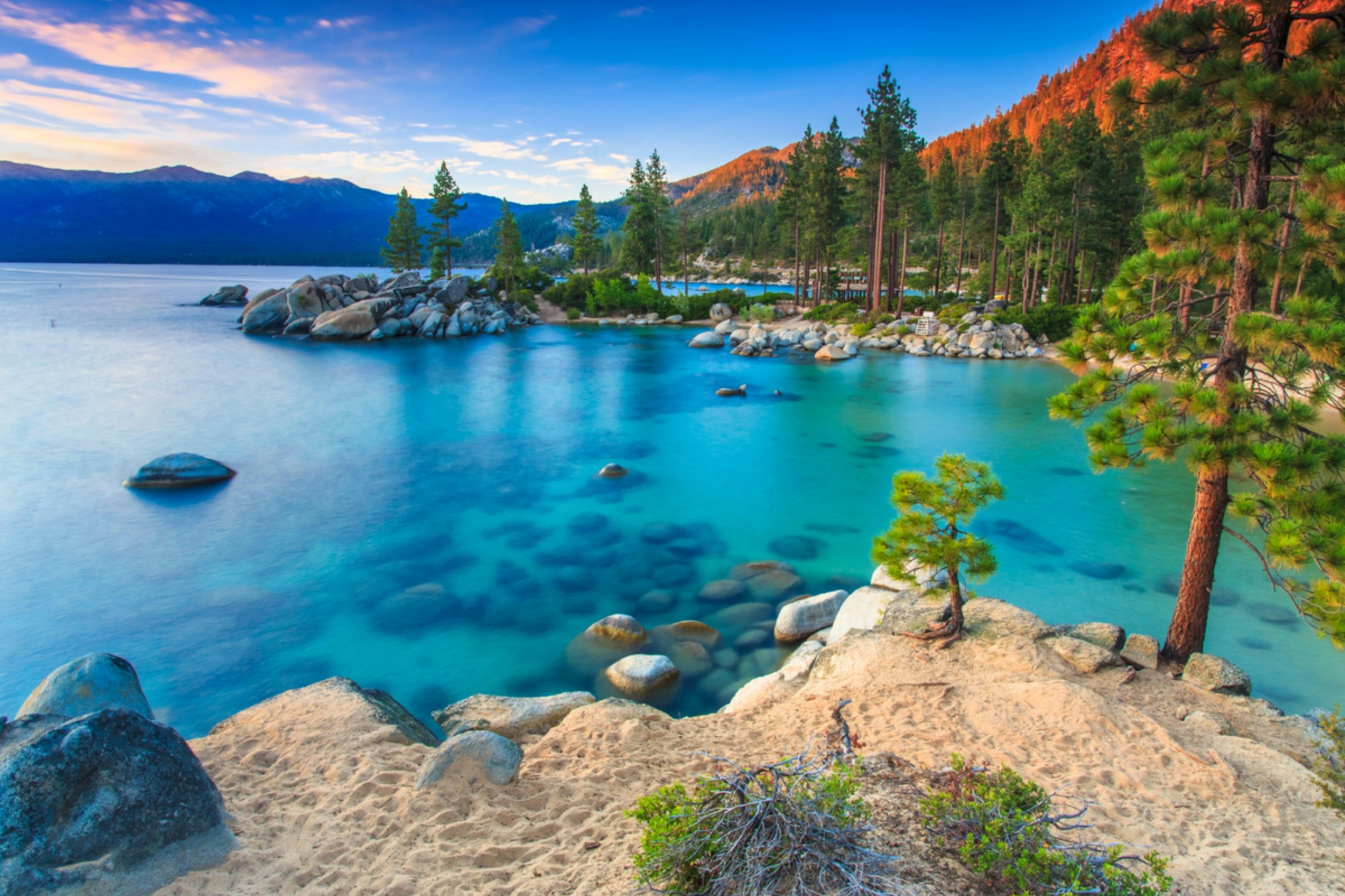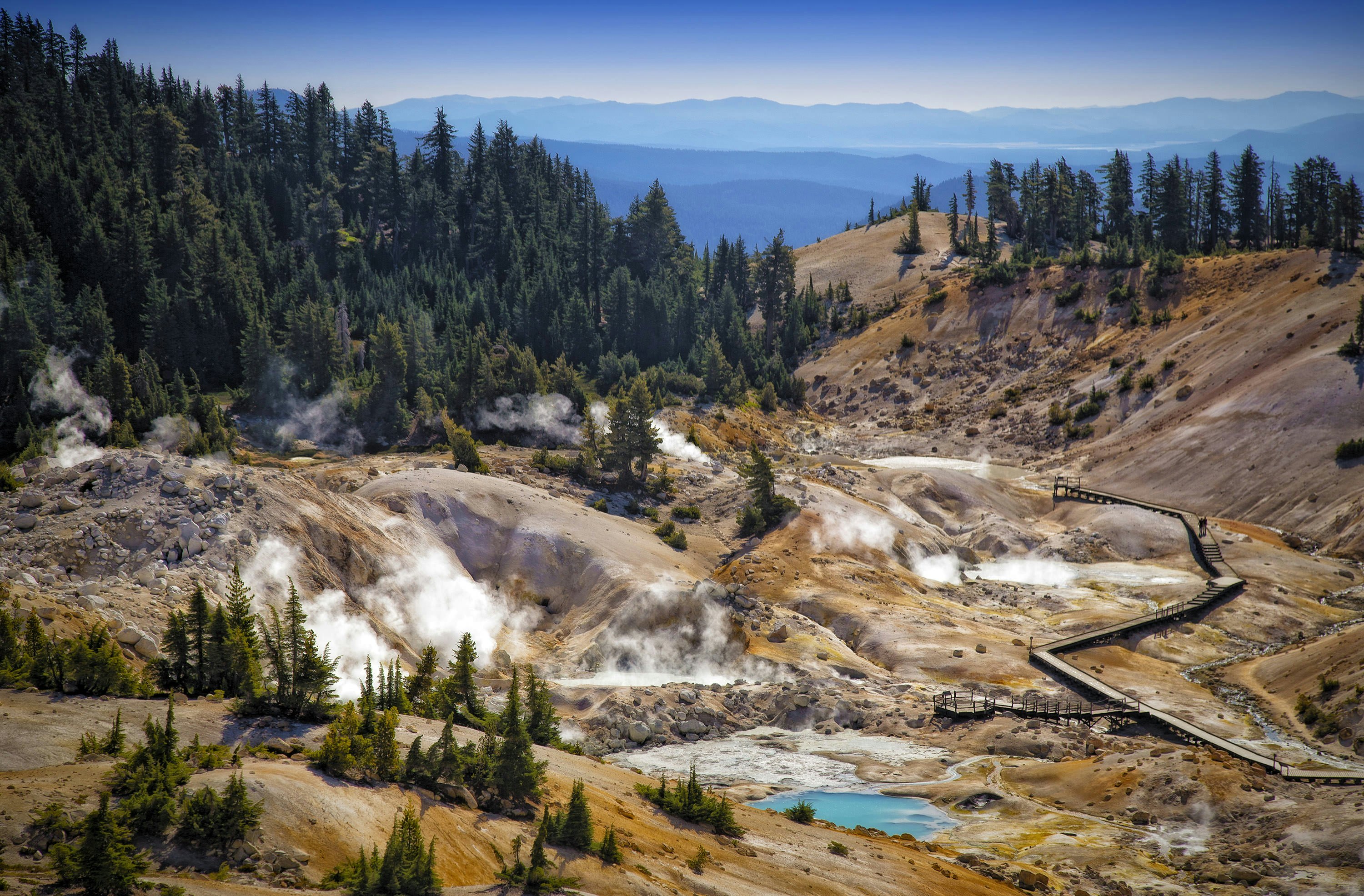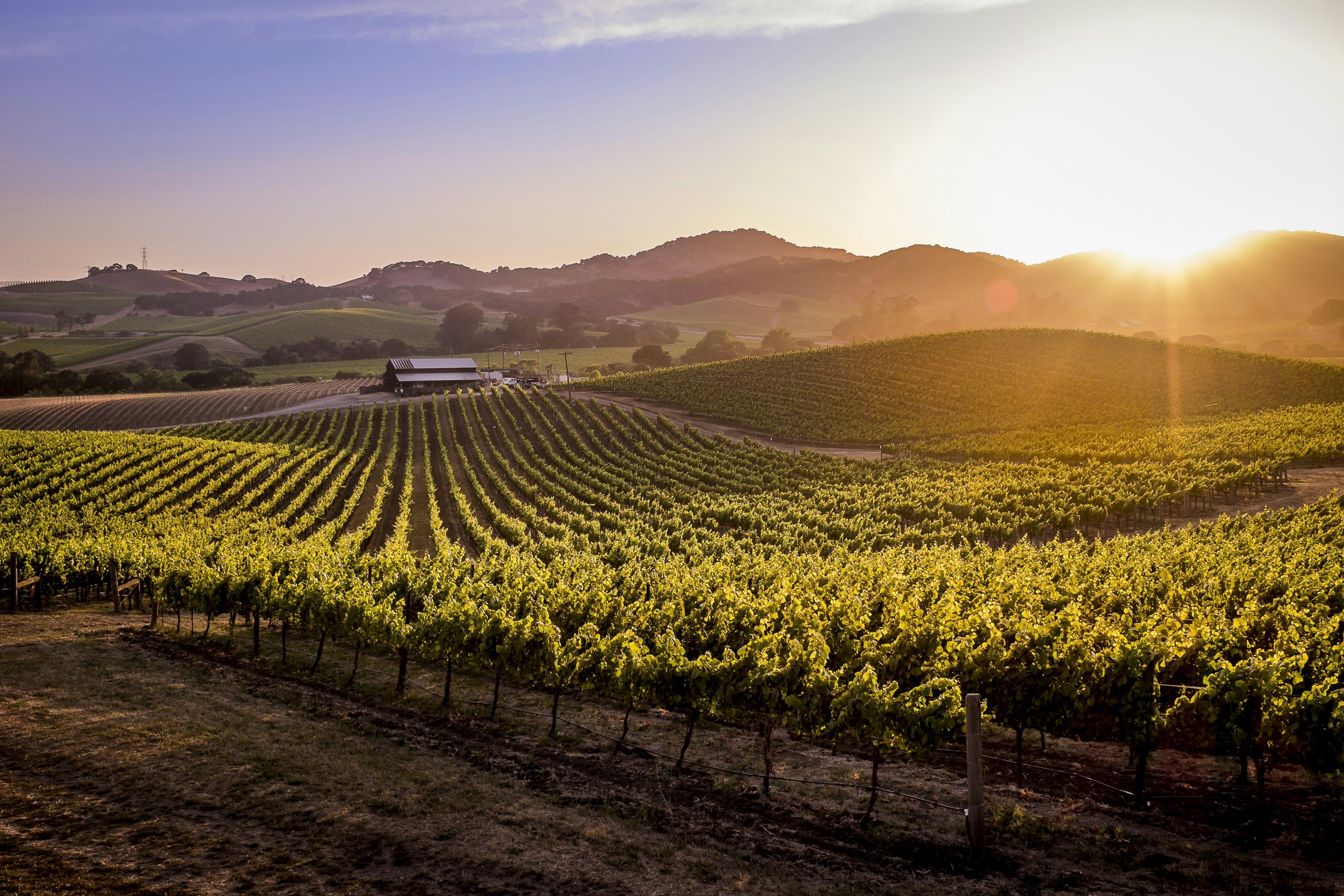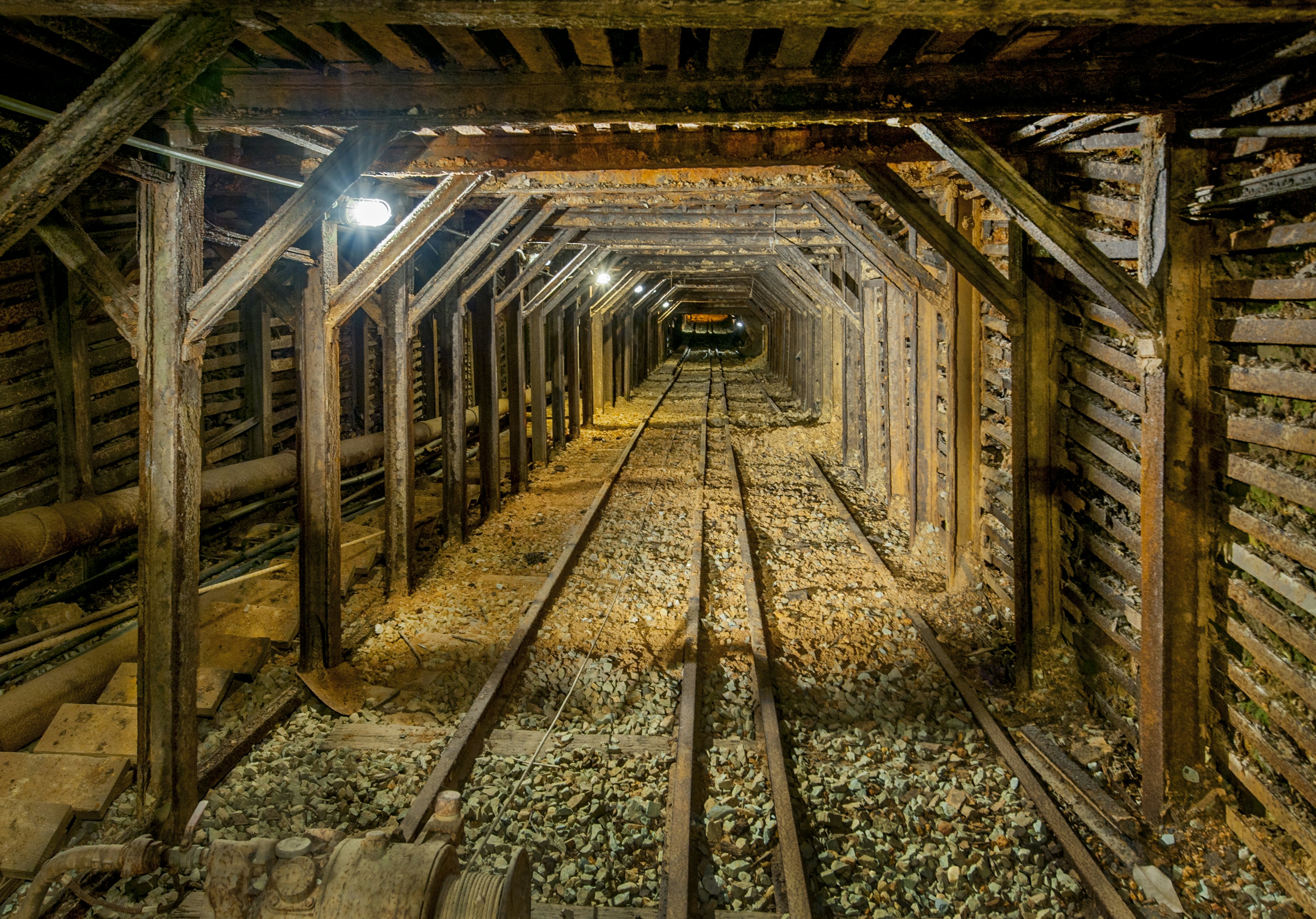
The 30 best countries, cities and regions to visit in 2025

Charming towns and jaw-dropping landscapes, including at Yosemite National Park, are within day-tripping distance of Sacramento © haveseen / Shutterstock
Located roughly halfway between San Francisco and Lake Tahoe, Sacramento is the ideal launchpad for reaching some of California's most popular destinations on easily accessible on day trips.
When you're ready to head out of California's capital city, you can point your GPS in any direction to find gorgeous national parks, old-timey gold mining towns and lush valleys full of world-renowned vineyards. These are the best day trips to take from Sacramento.

Get to know the capital of weird from the inside out, from mural-lined alleyways named after poets to clothing-optional beaches on a former military base. But don't be too quick to dismiss San Francisco's wild ideas – biotech, gay rights, the internet, cable cars and organic fine dining were once considered outlandish, before San Francisco introduced these underground ideas into the mainstream decades ago.
San Francisco's morning fog erases the boundaries between land and ocean, reality and possibility. Rules are never strictly followed here. The Golden Gate Bridge and Alcatraz are entirely optional – San Franciscans mostly admire them from afar. Instead of sightseeing, just follow your bliss through Golden Gate Park, past flamboyantly painted Victorian homes, and through art-filled Mission streets. Just don't be late for your sensational, sustainable dinner: in San Francisco, you can find happiness and eat it too.
How to get to San Francisco from Sacramento: Traffic and parking can be tough in San Francisco, so hop on the Capitol Corridor train instead. This route links Sacramento to Oakland, which has frequent public transport connections to San Francisco. The journey takes about two hours.
The 16 best California road trips

Shimmering in myriad shades of blue and green, Lake Tahoe is the USA’s second-deepest lake. Sitting at 6245ft, it is also one of the highest-elevation lakes in the country. Driving around the 72-mile shoreline is a spellbinding adventure, with curves, viewpoints and beckoning trails. Generally, the north shore is quiet and upscale; the west shore, rugged and old-timey; the east shore, undeveloped; the south shore, bustling with motels and casinos. The horned peaks surrounding the lake are year-round destinations. The sun shines on Tahoe three out of every four days. Swimming, boating, kayaking, windsurfing, stand-up paddle boarding (SUP) and boat cruises prevail in summer, as do hiking, camping and wilderness backpacking. Winter brings bundles of snow, perfect for hitting Tahoe’s top-tier ski and snowboard resorts.
How to get to Lake Tahoe: Lake Tahoe straddles the California–Nevada state line. It takes about two hours to drive the 115 miles to Tahoe City, the western shore's commercial hub.
The best time to visit California
The jaw-dropping head-turner of the USA's national parks, and a Unesco World Heritage site, Yosemite National Park garners the devotion of all who enter. From the waterfall-striped granite walls buttressing emerald-green Yosemite Valley to the skyscraping giant sequoias catapulting into the air at Mariposa Grove the place inspires a sense of awe and reverence – four million visitors wend their way to the country’s third-oldest national park annually. But lift your eyes above the crowds and you’ll feel your heart instantly moved by unrivaled splendors: the haughty profile of Half Dome, the hulking presence of El Capitan (known to the Indigenous Ahwahneechee as To-tock-ah-noo-lah), the drenching mists of Yosemite Falls, the gemstone lakes of the high country’s subalpine wilderness and Hetch Hetchy's pristine pathways.
How to get to Yosemite National Park: Yosemite National Park makes for a long day trip from Sacramento, but it's doable and worth your time if you can only spare a day. The Yosemite Valley Visitor Center is 165 miles from Sacramento, and the drive takes three and a half hours.
How to spend your first visit to Yosemite National Park

Bodega Bay is the first pearl in a string of sleepy fishing towns that line the North Coast and was the setting of Hitchcock’s terrifying 1963 avian psycho-horror flick The Birds. The skies are free from bloodthirsty gulls today (though you'd best keep an eye on your picnic); it’s Bay Area weekenders who descend en masse for extraordinary beaches, tide pools, whale-watching, fishing, surfing and seafood. Mostly made up of a few restaurants, hotels and shops on both sides of Hwy 1, Bodega Bay's downtown is not made for strolling, but it is a great base for exploring the endless nearby coves of the Sonoma Coast State Beach. Hwy 1 runs through town and along the east side of Bodega Bay. On the west side, a peninsula resembling a crooked finger juts out to sea, forming the entrance to Bodega Harbor.
How to get to Bodega Bay: Bodega Bay is on the Pacific coast west of Sacramento. The drive is about 110 miles, and the journey time is a little over two hours.

Although Lodi was once the watermelon capital of the world, today, full-bodied wine rules this patch of the valley. Breezes from the Sacramento River Delta soothe the area’s hot vineyards, where some of the world's oldest zinfandel vines grow. Lodi’s diverse soil is sometimes rocky, sometimes fine sandy loam, giving its grapes a range of distinctive characteristics that allow for experimentation with some less common varietals. Lodi is an ideal destination for those looking for a low-key, budget-friendly wine trip. The town also hosts a slew of festivals dedicated to their famous export, including the Wine and Chocolate Weekend in February and ZinFest in May.
How to get to Lodi: Lodi lies approximately 35 miles southeast of Sacramento. The drive takes about 40 minutes.

Perfectly arranged on a secure little harbor on the bay, Sausalito is undeniably lovely. Named for the tiny willows that once populated the banks of its creeks, it’s famous for its colorful houseboats bobbing in the bay. The town sits on Richardson Bay, a smaller bay within San Francisco Bay. Much of the well-heeled downtown has uninterrupted views of San Francisco and Angel Island, and because of the ridgeline at its back, fog generally skips it. Sausalito is (understandably) a major tourist trap, jam-packed with souvenir shops and costly boutiques.
How to get to Sausalito: Sausalito is the first town you encounter after crossing the Golden Gate Bridge from San Francisco, so daytime crowds turn up in droves and can make parking difficult. Either start this day trip early — it's about an hour and 45 minutes driving from Sacramento — or ferry over from San Francisco for a more relaxing excursion.

Nevada City knows it's charming, but it doesn't like to brag. The shops sell prayer flags and chia smoothies, while the drinking holes sling all manner of liquid enlightenment. The person browsing the history museum with you is just as liable to be an old-timer, a road-weary backpacker or a mystical folk artist. In the midst of all this are the requisite Victorian and Gold Rush tourist attractions – an elegantly restored town center and frilly B&Bs.
Nevada City’s strollable streets are especially lively in summer. In December, the snow blanket and twinkling lights are something from a storybook. Nevada City is the gateway to Tahoe National Forest , but linger to experience inviting NorCal culture and the energetic, youthful vibe. The theater companies, alternative film houses, bookstores and venues put on shows almost every night; tune into radical local radio station kvmr.org at 89.5FM to catch the vibe and hear what's on.
How to get to Nevada City: Despite its name, Nevada City is in California, and it's about 60 miles northeast of Sacramento. The drive takes about an hour and 15 minutes.

The dry, smoldering terrain within the 106,000-acre Lassen Volcanic National Park stands in stunning contrast to the cool, green conifer forest that surrounds it. That’s in summer; in winter tons of snow ensures you won’t get too far inside its borders without some serious gear. Still, entering the park from the southwest entrance is to suddenly step into another world.
The lavascape offers a fascinating glimpse into the earth’s fiery core. In a fuming display, the terrain is marked by roiling hot springs, steamy mud pots, noxious sulfur vents, fumaroles, lava flows, cinder cones, craters and crater lakes. In earlier times, the region was a summer encampment and meeting point for the Atsugewi, Yana, Yahi and Maidu Native American tribes. They hunted deer and gathered plants for basketmaking here. Some indigenous people still live nearby and work closely with the park to help educate visitors on their ancient history and contemporary culture.
How to get to Lassen Volcanic National Park: To reach Lassen Volcanic National Park's headquarters, it's a two hour and 45 minutes drive from Sacramento, clocking in at 170 miles.
Introducing California's national parks

Napa Valley is exactly what you expect when you think of Wine Country: hillside chateau wineries, bold cabernets, vast expanses of perfectly ordered grape vines, grassy slopes speckled by the tungsten sun, restaurant dinners that go on for hours, and some of the finest and most luxurious small-scale boutique hotels anywhere in California. Beyond the typical, Napa has some great hiking in the hillsides, exhilarating mud baths up north in the more working-class town of Calistoga, and plenty of small shops, wineries and classy bistros in the tony village settings of St Helena and Yountville.
How to get to Napa Valley: Most journeys start and end in the city of Napa proper, which is about 60 miles from Sacramento. The drive to Napa takes just over an hour.

Atop 367 miles of mine shafts tunneling almost a vertical mile beneath the surface, Empire Mine State Historic Park, the Gold Country’s best-preserved gold-quartz-mining operation, is worth a day’s exploration. From 1850 to 1956 the miners here, mostly Cornish, produced 5.8 million troy ounces of gold (worth about $8 billion today). The visitor center has maps and leads guided tours. It also houses an intricate scale model of the Empire-Star Mine from 1938. Detailing all the tunnels and connections, it was once a closely guarded secret.
It's also well worth paying to enter the mine yard, littered with mining equipment and buildings constructed from waste rock, and to view the main shaft's claustrophobic entry, next to the former site of the head frame (a tall structure used to haul ore and people from underground). Nearby is the English-manor-style summer cottage and 13 acres of gardens belonging to the Bourn family, who originally owned the mine; though this now appears incongruously idyllic, the noise of the mining activity must have been deafening. Hiking backcountry trails that meander past abandoned mines and equipment is free. Trailheads are located at the parking lots behind the visitor center and Penn Gate to its west.
How to get to Empire Mine State Historic Park: From Sacramento, it's a 60-mile drive to Empire Mine State Historic Park, which takes a little more than one hour.
You might also like:
Visit all of California's national parks on this legendary road trip
Why you should drive California's scenic Highway 395
Climb aboard for the USA's 6 most amazing train journeys